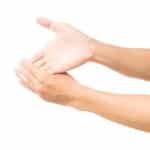
1. Understanding Wrist Pain and Its Common Causes
Wrist pain affects millions of people worldwide and can result from repetitive motion, injury, or underlying medical conditions. Whether it’s dull discomfort from long computer sessions or sharp pain from a sudden twist, wrist pain often signals inflammation or strain in muscles, tendons, or joints.
The most common causes include carpal tunnel syndrome, tendonitis, arthritis, and sprains. Carpal tunnel, for instance, compresses the median nerve as it travels through the wrist, causing tingling, numbness, and pain. Meanwhile, overuse injuries like tendonitis occur when tendons are repeatedly stressed without adequate rest.
Understanding what causes your wrist pain is the first step toward lasting relief and prevention.
2. Identifying the Type of Wrist Pain You Have
Different wrist pain types require different treatments. For example:
-
Sharp, shooting wrist pain may indicate a nerve issue such as carpal tunnel.
-
A dull ache often signals tendon overuse or mild arthritis.
-
Swelling and stiffness can point to bursitis or joint inflammation.
-
Pain during twisting or gripping suggests a ligament injury or repetitive strain.
If your wrist pain worsens at night, radiates up your arm, or includes numbness, a doctor may recommend nerve testing or imaging like an MRI. Identifying the correct cause helps target the most effective treatment plan.
3. Rest and Ergonomics: The Foundation of Healing
Rest is the cornerstone of recovery. Reducing repetitive strain allows tissues to heal and inflammation to subside. If you work long hours at a computer or use tools that strain your wrists, invest in ergonomic adjustments:
-
Keep your wrists in a neutral position while typing.
-
Use wrist supports or padded mouse pads.
-
Adjust desk height to align your elbows and wrists comfortably.
Ergonomic keyboards and vertical mice can also reduce wrist tension by encouraging natural wrist alignment. Remember, preventing wrist pain is easier than treating chronic damage.
4. Exercises to Relieve and Prevent Wrist Pain
Gentle stretching and strengthening exercises can significantly improve flexibility, reduce stiffness, and enhance blood circulation. Perform these daily if you suffer from mild wrist pain:
-
Wrist Flexor Stretch: Extend one arm forward, palm up. With the other hand, gently pull your fingers back until you feel a stretch. Hold for 20 seconds.
-
Wrist Extensor Stretch: Extend your arm with your palm facing down. Use the other hand to gently bend your wrist downward.
-
Grip Strengthening: Squeeze a soft stress ball for 5 seconds, then release. Repeat 10–15 times.
-
Wrist Rotations: Slowly rotate your wrists clockwise and counterclockwise for 10 reps each.
Always stop if you experience sharp or worsening wrist pain. Consistent exercise strengthens supporting muscles, reducing the likelihood of future injuries.
5. Home Remedies and Pain Relief Techniques
Mild wrist pain can often be managed with simple home care methods. The RICE method—Rest, Ice, Compression, Elevation—remains one of the most effective first-line approaches.
-
Rest: Avoid activities that aggravate wrist pain.
-
Ice: Apply ice packs for 15 minutes several times a day to reduce swelling.
-
Compression: Use a wrist brace or wrap for support and to minimize motion.
-
Elevation: Keep your wrist raised above heart level to decrease swelling.
Over-the-counter pain relievers like ibuprofen (NSAIDs) help reduce inflammation. Topical creams with menthol or capsaicin may also provide temporary relief.
6. When to See a Doctor for Wrist Pain
While mild pain usually improves with rest and self-care, persistent or severe symptoms warrant medical attention. You should consult a healthcare professional if:
-
Pain lasts more than two weeks.
-
You experience numbness, tingling, or weakness.
-
The wrist looks deformed or swollen after an injury.
-
Pain interferes with daily activities or sleep.
Doctors may use X-rays, ultrasound, or MRI scans to assess structural damage. Treatments could include corticosteroid injections, physical therapy, or in severe cases, surgery to relieve nerve compression or repair torn ligaments.
7. Long-Term Prevention Strategies for Wrist Health
Preventing wrist pain means creating sustainable habits that support joint and tendon health. Here are proven strategies:
-
Warm up before physical activity: Simple stretches prepare muscles and improve flexibility.
-
Take frequent breaks: If you type or use your hands repetitively, rest every 30–45 minutes.
-
Maintain good posture: Shoulder and spine alignment affect wrist positioning.
-
Stay hydrated: Dehydration contributes to joint stiffness.
-
Strengthen forearm and hand muscles: Balanced strength reduces uneven tension.
Regular exercise, proper ergonomics, and mindful movement can help you maintain healthy wrists for years.
8. The Emotional and Lifestyle Impact of Wrist Pain
Chronic pain isn’t just physical—it affects your quality of life. Tasks like typing, cooking, or exercising can become frustrating and limiting. Many people experience anxiety or mood changes due to reduced independence or ongoing discomfort.
Addressing wrist pain early prevents emotional burnout and supports mental well-being. Combining physical treatment with mindfulness, relaxation techniques, and stress management can accelerate healing and improve your overall outlook.
9. Professional Treatments and Advanced Therapies
If conservative care fails, advanced options are available. Physical therapy can teach movement retraining to reduce strain. Corticosteroid injections may temporarily relieve inflammation in conditions like tendonitis or carpal tunnel.
For persistent pain, platelet-rich plasma (PRP) injections or shockwave therapy are emerging regenerative treatments. In severe cases, arthroscopic surgery repairs or removes damaged tissue while minimizing recovery time.
Consult an orthopedic specialist or hand surgeon to determine the best course of action based on diagnosis and lifestyle needs.
10. Taking Control: Living Pain-Free and Strong
Pain doesn’t have to dictate your life. With consistent care, ergonomic awareness, and targeted exercises, most cases improve significantly without surgery. Early intervention remains the key to avoiding chronic pain or irreversible nerve damage.
Empower yourself with knowledge, take breaks when needed, and listen to your body. Small daily changes—like stretching, maintaining posture, and staying active—can make all the difference between recurring wrist pain and long-term mobility.
References
-
American Academy of Orthopaedic Surgeons. Wrist Pain Causes and Treatments. https://orthoinfo.aaos.org
-
Mayo Clinic. Carpal Tunnel Syndrome Overview. https://www.mayoclinic.org
-
Harvard Health Publishing. Wrist Pain Relief and Prevention Tips. https://www.health.harvard.edu
-
Cleveland Clinic. Tendonitis and Wrist Injury Guide. https://my.clevelandclinic.org








